01:14
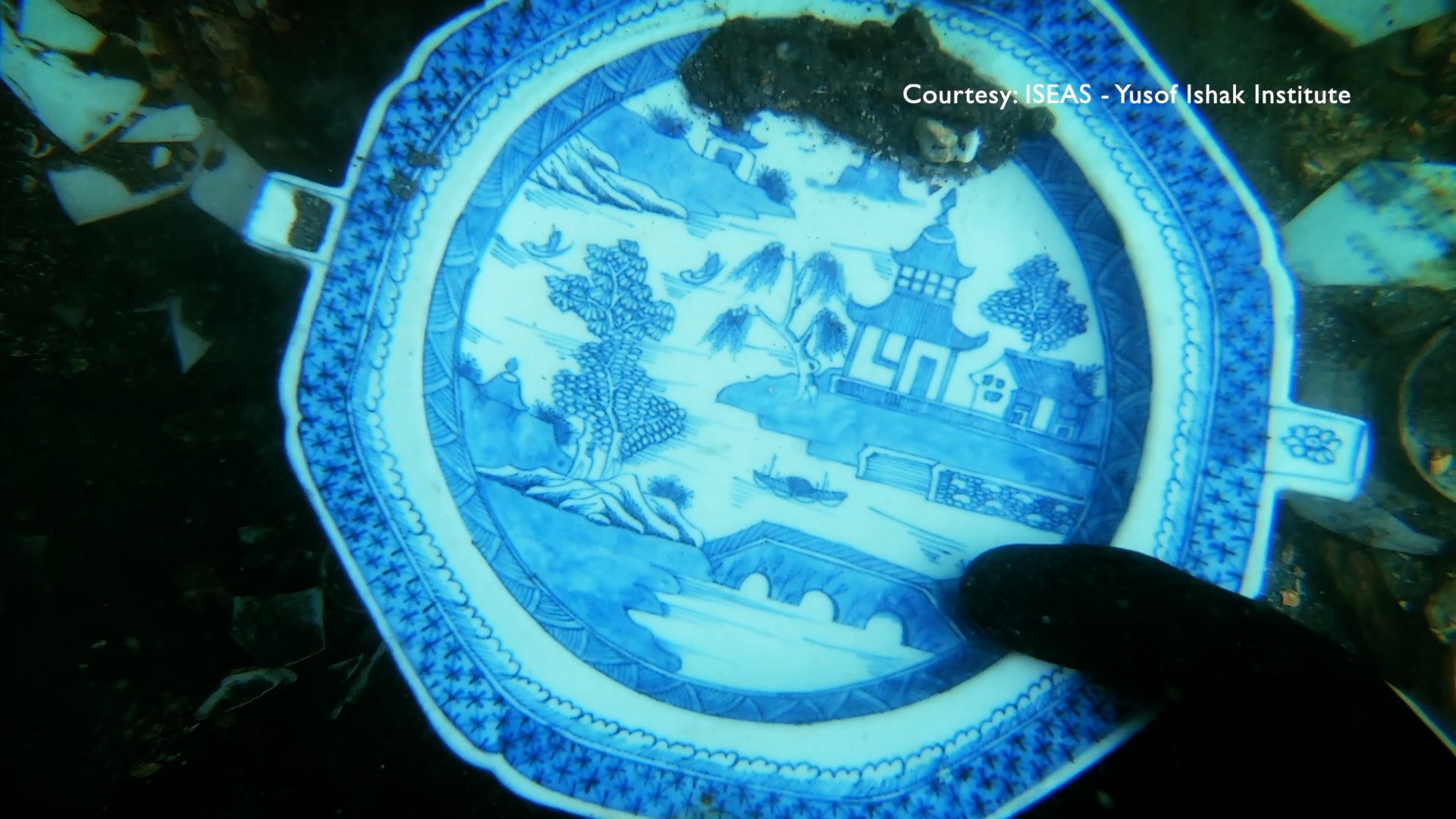
An accident and the civic-mindedness of some commercial divers have led to the discovery of two centuries-old shipwrecks in Singapore's territorial waters – one of which is the first-ever ancient shipwreck to be found near the island nation.
The two wrecks dating back to the early 14th century and late 18th century were found near the outlying island of Pedra Branca – 54 kilometers off the mainland of Singapore.
The area around Pedra Branca is extremely dangerous to navigate, as it is dotted with treacherous rocks and reefs coupled with shallow waters.
The first discovery
In December 2014, a Singapore-registered barge ran aground at Pedra Branca due to bad weather. The barge was carrying two cranes that were in danger of toppling onto the island's historic Horsburgh Lighthouse. To protect the lighthouse, the cranes had to be blown up, and divers were sent to clear the debris.
"While they were looking for steel parts, they found ceramics instead," explained Michael Flecker, PhD, a visiting fellow and project director for maritime archaeology projects at the ISEAS-Yusof Ishak Institute.
"They came to us with a series of plates. They were Longquan greenware, which could have dated 14th century, maybe early 15th. It was very civic-minded of them. Had they not done that, the whole site could have been looted; we may never have found out."
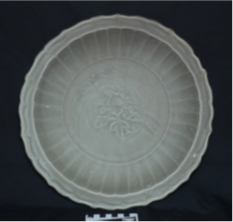
A large Longquan dish with an everted foliated rim from Shipwreck 1. /ISEAS-Yusof Ishak Institute
A large Longquan dish with an everted foliated rim from Shipwreck 1. /ISEAS-Yusof Ishak Institute
Initially, Flecker and his team weren't sure whether the divers had found a whole wreck or just a series of plates jettisoned from an ancient ship.
"We did a survey, and having got to the seabed instead of just one or two pieces that could have been wedged amongst the rocks, we actually saw the whole seabed was carpeted in ceramic shards. We also noted that it was not just the greenware; there was also some blue and white, and the Yuan blue and white is very rare, so that was exciting," said Flecker.
In 2016, Singapore's National Heritage Board (NHB) commissioned Flecker's department at the ISEAS-Yusof Ishak Institute to begin excavation work at the site of Shipwreck 1.
"We could only go out one week at a time because of the currents, and on Shipwreck 1, we did 10 trips of one week each and excavated quite an extensive area," said Flecker.
"Sometimes we would encounter strong currents or waves that can be quite bad. Sometimes the visibility can drop due to the fact that there is heavy torrential rains in the area. We just have to look out for each other and always be wary of our situation," explained Michael Ng, project manager for maritime archaeology projects at the ISEAS-Yusof Ishak Institute.
Ng also explained that once the artifacts were brought to the boat, they needed to be separated, packed into mesh bags and kept moist to prevent corrosion.
Shipwreck 1
Salvage work, which was carried out between 2016 and 2019, revealed a treasure trove of rare and unique artifacts.
But the biggest highlight was what it contained – the largest haul of Yuan blue-and-white ceramics from any documented shipwreck in the world.
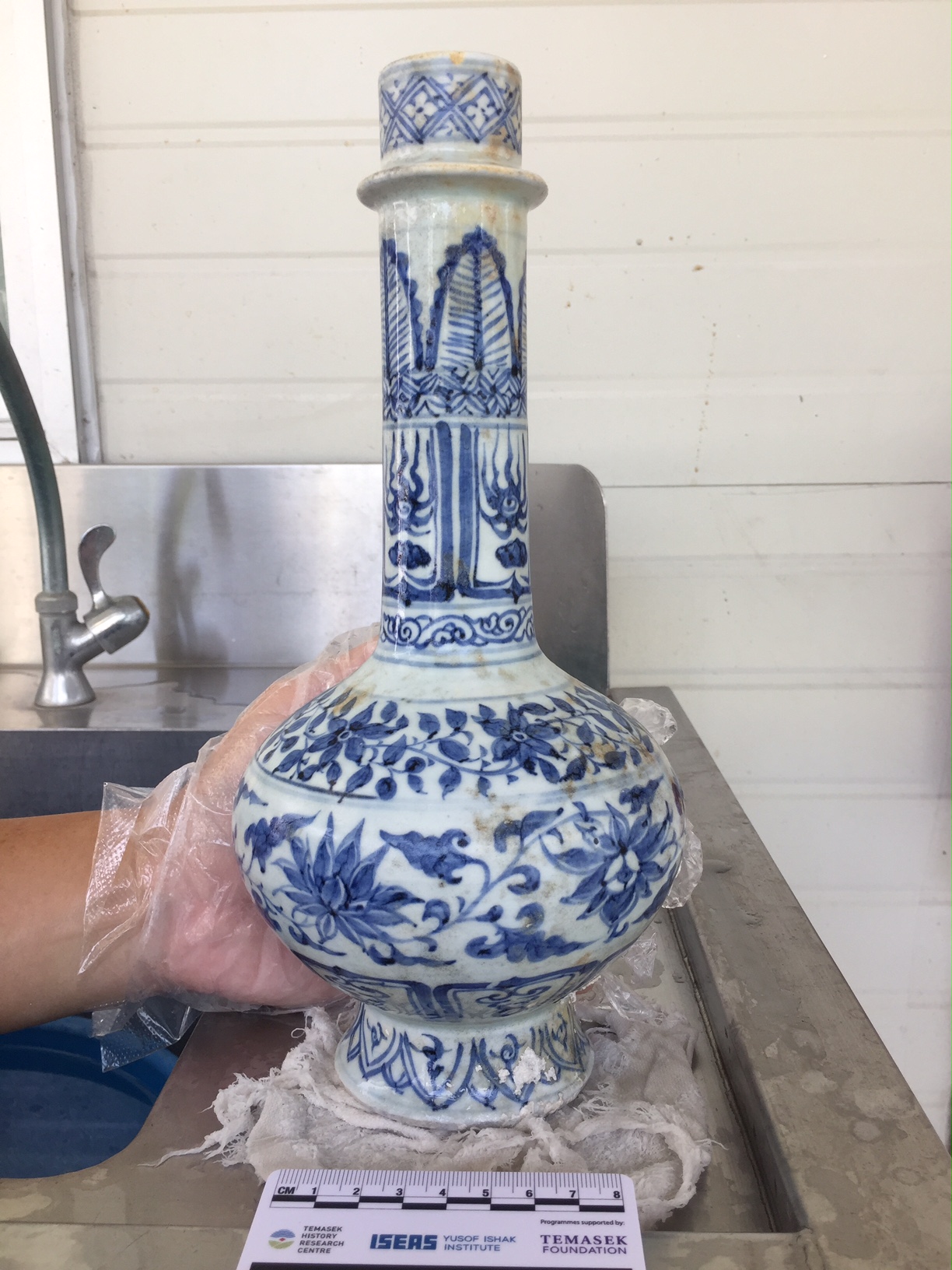
A rare 14th century Yuan blue-and-white bottle from the first shipwreck. /ISEAS-Yusof Ishak Institute
A rare 14th century Yuan blue-and-white bottle from the first shipwreck. /ISEAS-Yusof Ishak Institute
And that's not all. The ship contained Chinese ceramics dating back to the 14th century, a period in history when Singapore was widely known as Temasek.
Direct parallels can be made between the finds from Shipwreck 1 and those from terrestrial archaeological excavations at Empress Place conducted in 2015 and from past excavations at Fort Canning Park on Singapore's mainland.
Archeologists say the findings will not only help piece together Singapore's pre-colonial maritime history but also lend credence to a longstanding belief. That the island nation might have been a prominent shipping and trade hub long before the Europeans arrived.
Shipwreck 2
Intrigued by the first wreck, Flecker and his team sought permission to do a survey around the island of Pedra Branca.
"We were just looking in the shallows, and in the process of the visual survey there, we found some tiny shards of porcelain. Those shards were from the late 18th or early 19th century. That was pretty interesting. We looked more and more around that area; we found more and more, and we came back and mobilized to do an excavation of the second one," he said.
Excavation work on the second site was carried out between 2019 and mid-2021. The second wreck has been identified as the "Shah Munshah," which sank in 1796 – when it was on its last voyage from China to India.
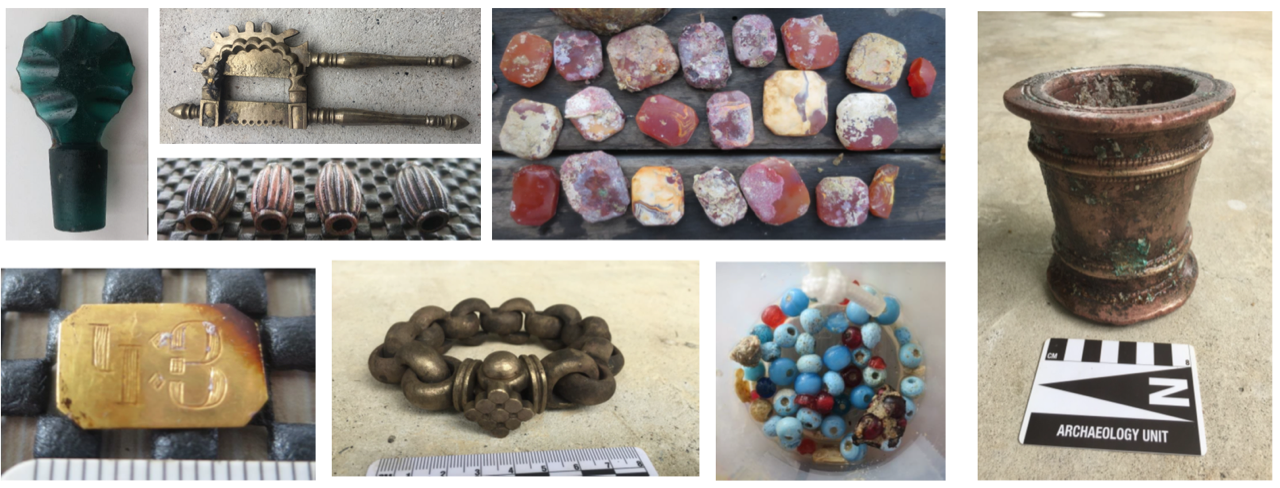
A range of non-ceramic artifacts recovered from shipwreck 2. /ISEAS-Yusof Ishak Institute
A range of non-ceramic artifacts recovered from shipwreck 2. /ISEAS-Yusof Ishak Institute
"It's late 18th century, but the range of artifacts and the number of intact artifacts was far more extensive. We didn't think we were going to find any intact ceramics because it was a shallow, high-energy environment, but we ended up finding thousands of intact pieces."
Artifacts recovered from this shipwreck include a range of Chinese ceramics and non-ceramic artifacts, such as copper-alloy, glass sand agate figurines, four anchors and nine ship cannons. The cannons were typically mounted on merchant ships employed by the East India Company during the 18th and early 19th centuries and served to defend the ships' precious cargo.
"One of the interesting things about Shipwreck 2 is that there is a manifest, so we know the main cargo items, but those are only a dozen or so. But we found hundreds of different artifacts, so this gives us a great idea of the non-manifested items, the things that were taken as private trade," said Flecker.
Next Steps
After their excavation, the artifacts are required to undergo an arduous process of conservation.
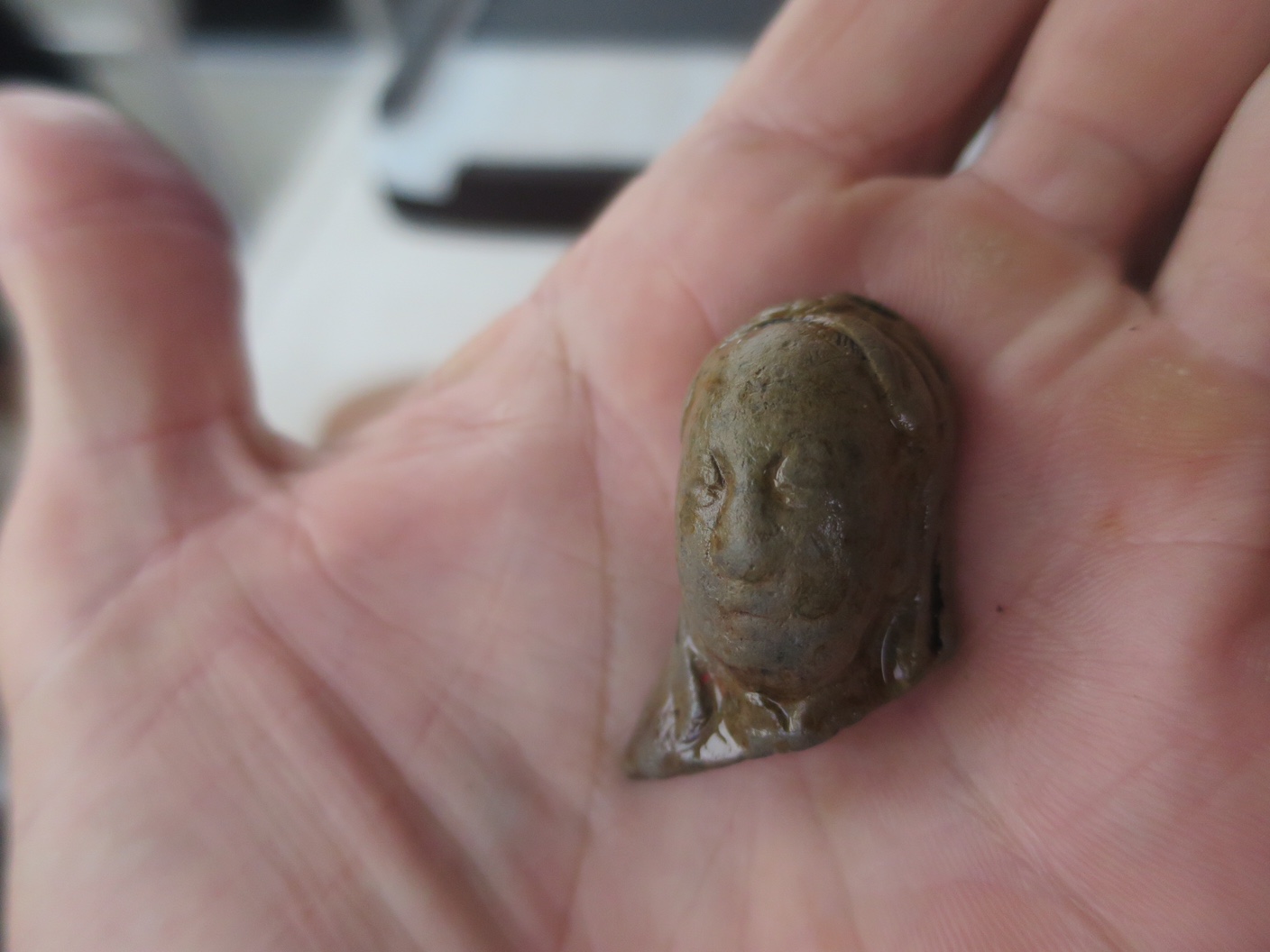
A Guanyin head figurine recovered from the second shipwreck. /ISEAS-Yusof Ishak Institute
A Guanyin head figurine recovered from the second shipwreck. /ISEAS-Yusof Ishak Institute
"We desalinate ceramics, put them in freshwater and leech out all the salts, but we have a big range of metal artifacts especially from the second shipwreck which have to undergo chemical treatment to achieve the same aim so that when you finally take them out, they are not going to rapidly corrode," Flecker explained.
The artifacts are then meticulously cleaned and cataloged. In-depth research and documentation will also need to be carried out.
Once the conservation, research and documentation process is complete, the NHB will exhibit the artifacts in its museums, which could be as early as the end of 2021.
"When we look at it more in detail, and we have a long way to go, you will be able to distinguish to what extent items were for purchase in Singapore, for the local residents of all statures or for re-export for transshipment," Flecker concluded.

